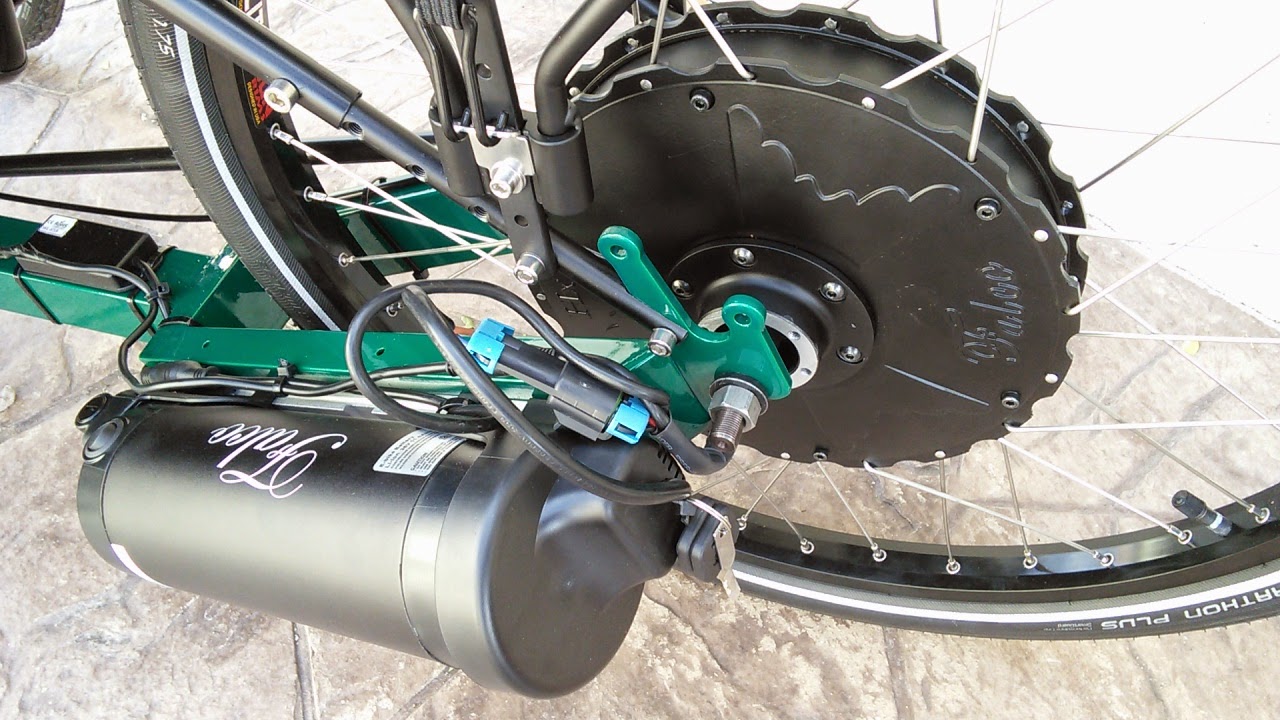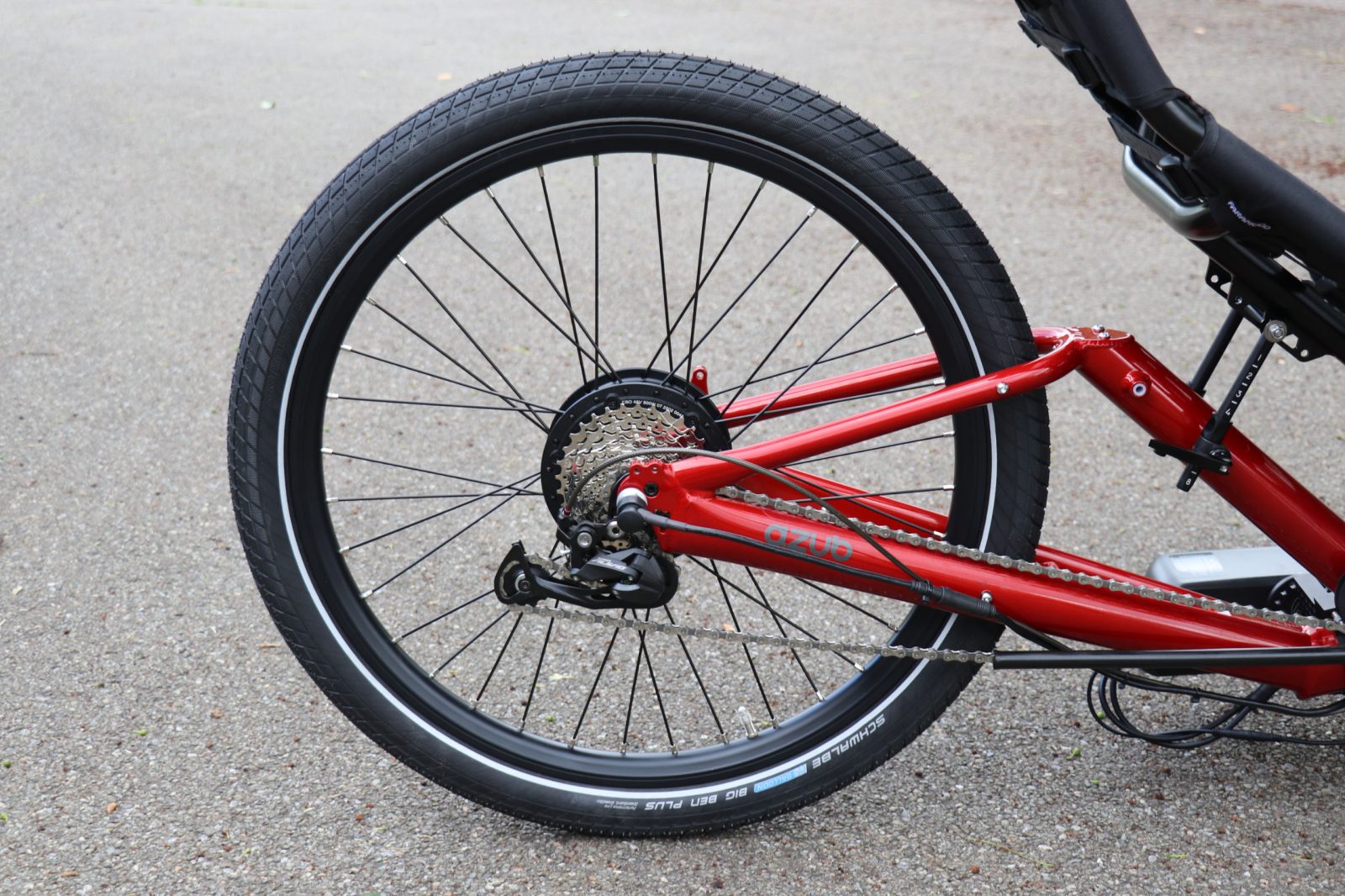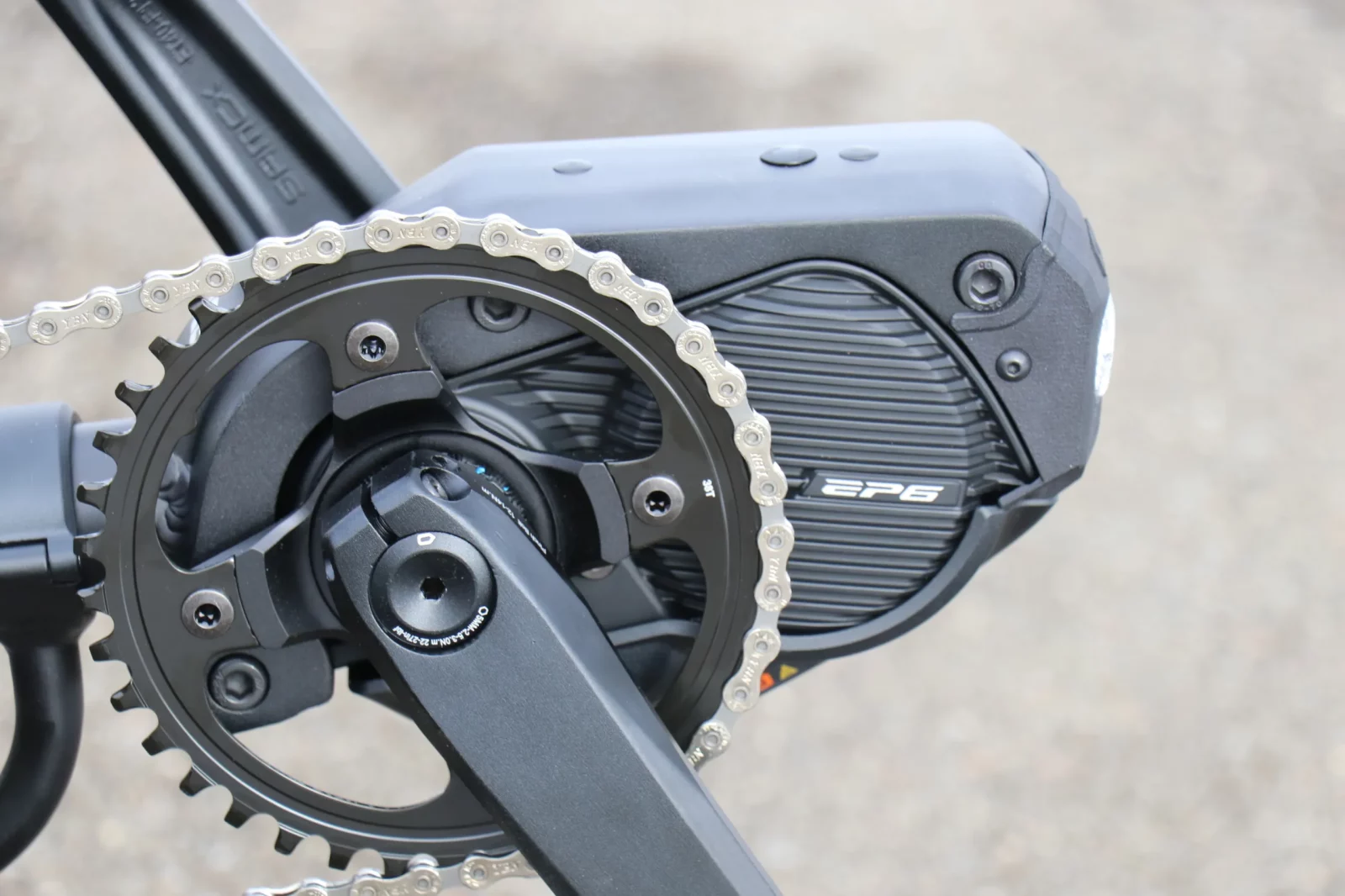I’ve been taking two or three 45-minute phone calls a day about electric assists and wanted to put the information all in one place. The following is what we usually end up talking about and is a mix of fact and opinion.
The Basics
Let’s start with the basics. E-assists fall into two main types-hub motors and mid drive units. Most the hub motors we see from big brands consist of a rear hub that has magnets and coils of wire inside that move past each other when you add electricity from a lithium-ion battery pack. They work like a generator in reverse-instead of something spinning the coils and magnets and electricity coming out to be stored in a battery, the battery has electricity flowing through the coils spinning past magnets and causes the hub to spin, which is the rear wheel.
Mid drive units replace the usual bottom bracket and crankset with the drive which is a small electric motor that has gears inside to “step up” the power of the motor. It works in a similar manner to bicycle gears “stepping up” your muscles power to push a bike down the road. The assisting help gets to the rear wheel via the chain and adds to the power that your legs are providing to move you down the road. It’s called a mid-drive because the crank it replaces is in the middle of a traditional bike. On our recumbent bikes and trikes, it should be called a front drive (don’t hold your breath while waiting for the name change).
Hub Motors


Hub motors come in two flavors, large diameter “gearless” hubs and smaller diameter “geared” hubs. The gearless motors work great on flat to rolling terrain. The hub is most efficient when spinning quickly so moving down the highway at a good pace is where they shine. Where they are not as good is climbing a super steep hill going two or three mph. That’s when you can feel and hear the strain on the motor. Remember, the hubs work by having magnets move past coils so if they are moving slowly more electricity flows to keep the wheel moving and the hub starts to get hot and uses a lot of the battery charge. When it gets too hot the system shuts down to protect itself from damage. Then wait a half an hour and start riding again.
The geared style motors use a smaller motor which spins quickly and is then stepped down by a series of plastic gears to make the power from the motor usable on a bicycle. They work well on the flat to rolling terrain but are better at handling the steeper climbs than the gearless versions. The reason is because the motor inside can spin faster in low speed/high torque situations because of the gears, which are more efficient and let the motor run cooler.
Mid Drives

Mid drives also tend to be good at some things and not so good at others. The claim to fame for mid drives is how well they handle steep climbs and heavy loads. We have a test ride hill we try these motors out on, the mid drives from Bosch and Shimano handle the steepest pitches much better than the hub motors. The reason is that the smaller motors the mid drives use are connected to gears inside the casing that allow them to spin faster while grinding up the hill.
The faster spinning motor is more efficient and will not heat up as much under the load. Imagine yourself trying to climb a hill in your hardest gear-you would be overheating and need a half hour time out like the hub motor. Then climb the hill in the granny gear and it’s not so bad.
The mid drives do have not so good sides. Those gears inside the casing make noise and can wear out. They are made of high-tech plastic to help them run quieter and smoother. Still though, they are plastic. The other potential issue can be increased drive-train wear. Remember, the chain is what transfers the motors help to the rear wheel. The force of your legs plus the motor is brought to bear on the chain, cassette and chainrings of your bike or trike.
There’s just no way around the fact that using a mid-drive is like a stronger person is riding your recumbent all the time and things will wear faster than if it was just you without the help of the motor. How much faster, hard to say but I don’t think it makes a huge difference. People use them on mountain bikes climbing steep hills and are doing OK without a lot of broken chains so I’m not too worried.
Recumbents
The recumbent industry seems to be heading in the mid-drive direction. HP Velotechnik, Ice, Azub, Day 6 and Terratrike all have mid drive options. Most of them are built into a specially modified “boom” that is brand specific for the type of mid drive, usually Bosch or Shimano STEPS, and is installed at the factory with wiring run inside the frame. That’s great in some ways and bad in others. It’s nice that the wiring is run cleanly through the frame. It makes the trike look better and should help avoid pinched wires or shorts from wires rubbing on sharp edges that weren’t de-burred properly. It also makes it something that, in most cases, can’t be retrofitted to the trike you already have. On the plus side, the trike manufacturers are testing to see if adding an assist is going to hurt your trike. The ones they use are the ones they approve of and adding something else voids your warranty.
We have done a lot of hub conversions since 2008. I really liked the Bionx brand and wish they were still in business. That’s another thing driving the move to mid drives-in the last year two large hub motor companies went out of business. Bionx and Swiss Drive had good features and were spec’d on some big brands but now are gone. Where do those customers get replacement parts and new batteries going forward? With mid drives from HUGE companies like Shimano and Bosch I think the industry trusts that they are in for the long haul and are a good risk.
DIY Methods
We use a geared hub motor kit from Electric Bike Outfitters to set up systems for customers’ current non-electric trikes and bikes. We’ve been using the system for quite a few years now and have had minimal problems. We wanted a system that was not dependent on proprietary parts and batteries. Nothing is worse than spending money on a system and then having the company go out of business. We have had that happen with three companies over the years and never want to face it again.
In the DIY market, I think the biggest name is Bafang. We’ve looked at giving them a try and have customers who installed them on their bikes and trikes. Some had good success and other’s ran into warranty problems. The reason we hesitate is that they are widely available on the internet and are always “on sale” for $200 or $300 off the list price we would be trying to sell them at. We would be providing customer service, doing the installations and trying to provide warranty help if something went wrong. Would the discounters be providing the same level of service? Would we get swamped with calls from people who bought elsewhere wanting us to answer their questions about the product?
How do they compare
The most controversial topic for assists is “how can a 250-watt mid drive motor compete with a 750-watt hub motor, bigger is better, right?”. It’s a very hard one to talk about. Part of the answer goes back to what I said above about the strengths and weaknesses of each type. It also depends on what we think is good. Is hill climbing good? Is going fast and far per charge good?
I asked Bosch customer service that question, they said judging which motor is more powerful by watts is like judging how powerful cars are by comparing miles per gallon ratings. It’s not the right question. With mid drives, the companies quote maximum torque figures which help to give an idea of how they climb. I know from trying them that a system with 50Nm of drive torque will make it up Clark Road hill pretty well. That’s with a 250-watt mid drive motor. I’ve taken a 750-watt big brand hub motor up the same hill and it was close to stalling. On the flat at 15 to 20 mph the hub felt great and should go farther than the mid drives per charge.
In the mountain bike world, the mid drives have won because it’s all about the climb, and, because the weight of the motor is centered in the middle of the bike, handling isn’t affected as much as having a heavy hub motor in the back wheel. That’s fine, but does that matter when you are looking for a recumbent trike? My point is that the only way to figure out what would work best for you is to try them against each other.
We have the Shimano and Bosch mid drive equipped trikes on the floor to try. We also have demo trikes with the Electric Bike Outfitters system installed for comparison. The best way to see what is right for you is to try them head-to-head.
When I asked around to the companies making electric assists for the best way to compare apples to apples, they advised that I not even try. Just have people try them and don’t get too techie. I hope this article helps give an idea of how they work and what might be best for your needs. It is always best to try them in person to see what you think, and we would love to help that happen.
 Bicycle Man
Bicycle Man 